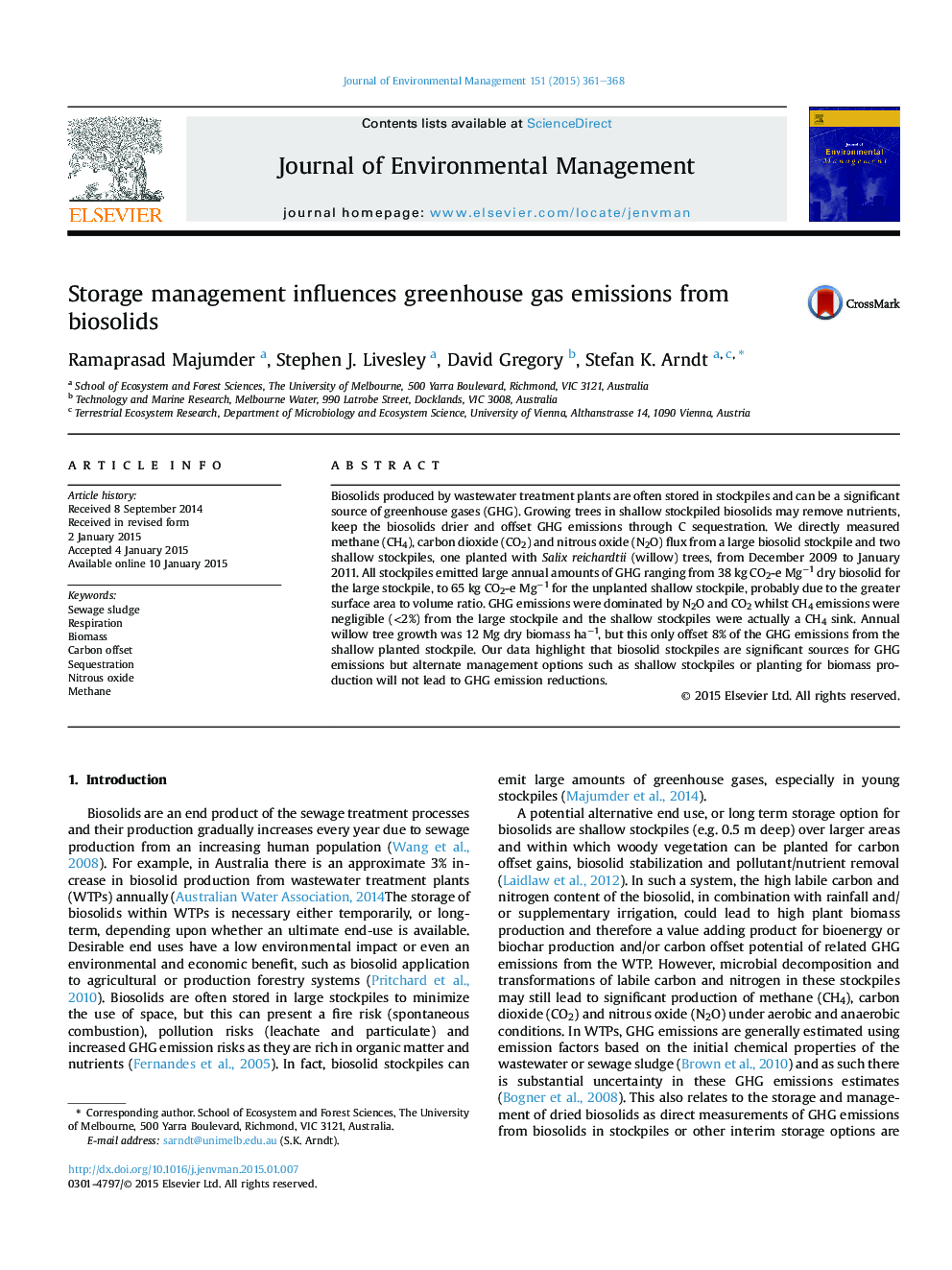| Article ID | Journal | Published Year | Pages | File Type |
|---|---|---|---|---|
| 7483010 | Journal of Environmental Management | 2015 | 8 Pages |
Abstract
Biosolids produced by wastewater treatment plants are often stored in stockpiles and can be a significant source of greenhouse gases (GHG). Growing trees in shallow stockpiled biosolids may remove nutrients, keep the biosolids drier and offset GHG emissions through C sequestration. We directly measured methane (CH4), carbon dioxide (CO2) and nitrous oxide (N2O) flux from a large biosolid stockpile and two shallow stockpiles, one planted with Salix reichardtii (willow) trees, from December 2009 to January 2011. All stockpiles emitted large annual amounts of GHG ranging from 38 kg CO2-e Mgâ1 dry biosolid for the large stockpile, to 65 kg CO2-e Mgâ1 for the unplanted shallow stockpile, probably due to the greater surface area to volume ratio. GHG emissions were dominated by N2O and CO2 whilst CH4 emissions were negligible (<2%) from the large stockpile and the shallow stockpiles were actually a CH4 sink. Annual willow tree growth was 12 Mg dry biomass haâ1, but this only offset 8% of the GHG emissions from the shallow planted stockpile. Our data highlight that biosolid stockpiles are significant sources for GHG emissions but alternate management options such as shallow stockpiles or planting for biomass production will not lead to GHG emission reductions.
Related Topics
Physical Sciences and Engineering
Energy
Renewable Energy, Sustainability and the Environment
Authors
Ramaprasad Majumder, Stephen J. Livesley, David Gregory, Stefan K. Arndt,
